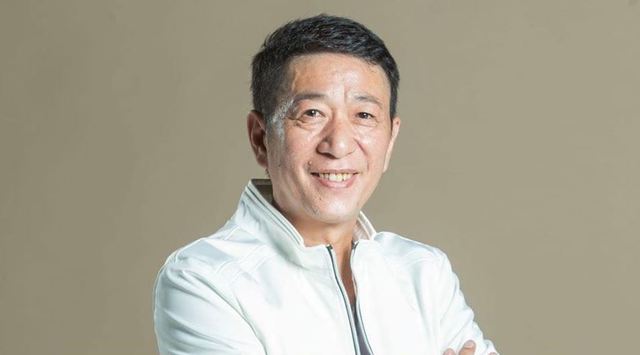Will U.S. President Donald Trump attempt to use Russia to isolate China — a kind of Nixonian initiative in reverse? If so, he may be disappointed.
Even before taking office, U.S. President-Elect Donald Trump’s hardline rhetoric toward China and his parallel sympathy for Russian President Vladimir Putin have raised the prospect that the new American administration may try to use Russia to help isolate China and undercut both its mercantilist trade policies and its increasingly assertive behavior in the South China Sea. Articles in leading Western publications like Britain’s Guardian newspaper have compared the prospective Trump initiative to the course taken in the early 1970s by president Richard Nixon, who turned to China to undercut Russia, which at the time the U.S. saw as a much greater threat to its expansive worldwide interests.
There are a number of compelling data points to back up the notion that Trump may intend to side with Russia and push back against China after he takes office on Jan. 20. Consider the following:
- Throughout his presidential campaign Trump was very complimentary about Russian President Putin, and bullish on the idea of improving relations with Moscow. In sharp contrast to this pro-Russian tilt, he made no secret at all of his enmity toward China, repeatedly castigating it for its supposedly predatory trade policies and its assertiveness in the South China Sea.
- Two of the most senior members of the Trump foreign policy team are personally acquainted with Putin and are believed to get along well with him. National Security Adviser-designate Michael Flynn once served as an analyst for RT, a Russian-government owned English-language media outlet, and Secretary of State-designate Rex Tillerson negotiated a number of massive hydrocarbon deals with Russian energy companies as head of oil giant Exxon Mobil, and was even awarded Russia’s prestigious Order of Friendship medal by Putin himself in 2013.
- One of Trump’s first foreign policy acts as president-elect was to converse by telephone with Taiwanese President Tsai Ing-wen, a precedent-setting move that he knew full well would infuriate Beijing.
- Following up on the phone call, Trump told a Fox News interviewer that he was in no way wedded to the “one China” policy, which has served as the basis for relations between Washington and Beijing ever since President Nixon’s historic China visit in 1972. China reacted to this statement with predictable fury, insisting that any retreat from the policy would result in a total reset of ties between the sides including China’s refusal to assist the U.S. in addressing a number of pressing international problems, including North Korea’s nuclear weapons program.
- After meeting with President-Elect Trump in New York on Dec. 12, former Republican presidential candidate and apparent Director of National Intelligence aspirant Carly Fiorina told reporters that China was “probably our most important adversary.” Her description, which was a far cry from traditional American rhetoric on the Sino-American relationship, almost certainly reflected Trump’s own views. For more than a decade, leading American officials have described China as an important partner in American efforts to manage the world economy and international affairs in general.
- On Dec. 21 Trump named University of California at Irvine economist Peter Navarro to head up a newly created office (the National Trade Council) that will oversee American trade and industrial policy. Over the past several years Navarro has emerged as an unabashed critic of China, accusing it repeatedly of craven currency manipulation and criminal behavior in the South China Sea. Navarro was an early Trump backer and his new position will almost certainly give him preferred access to the malleable ear of the incoming president. His appointment is an unmistakable sign that Trump’s apparent China reset is much more than some passing policy fancy.
In cozying up to Russia at China’s expense, Trump may be counting on what he sees as traditional Russian enmity toward Beijing. That enmity burst to the fore in the late 1950s against the background of Mao Zedong’s growing disappointment with what he perceived to be Russia’s weak backing for his efforts to confront the Chiang Kai-shek regime in Taiwan, and in a more general sense, with Mao’s disdain for Russia’s supposed lack of ideological fervor. Beyond these ideological and strategic factors, the enmity was also sustained by racial friction between the sides — a friction that has not subsided with time. Particularly over the past decade, Russia has shown deep concern over Chinese attempts to expand its economic reach into thinly populated borderlands of eastern Siberia. Russian nationalists paint these attempts as part and parcel of an unholy Chinese effort to infect these areas with the kind of Asiatic values that are deeply inimical to Russian sensibilities.
Particularly over the past decade, Russia has shown deep concern over Chinese attempts to expand its economic reach into thinly populated borderlands of eastern Siberia. Russian nationalists paint these attempts as part and parcel of an unholy Chinese effort to infect these areas with the kind of Asiatic values that are deeply inimical to Russian sensibilities.
However, as organic as the Russian suspicions of China may be, the two countries have worked hard to overcome them. Particularly over the past five years they have developed a robust economic and political relationship — a relationship that will not be easy to undermine, least of all by someone like Trump, who may not be fully aware of all its nuances. In the main the relationship is built upon the strategic synergy between Russia’s substantial hydrocarbon resources, and China’s pressing need to secure reliable sources of oil and gas to fuel its domestic demand. The synergy first came into prominence in 2012, when China’s Hu Jintao and Russia’s Vladimir Putin concluded a strategic partnership agreement meant to bind the countries together for a 10-year period. This was just around the time that American Secretary of State Hillary Clinton was unveiling the Obama administration’s new “Asia pivot” policy, which was designed to reassure nervous American allies in the region about American steadfastness there, particularly in the wake of more than a decade of U.S. preoccupation with the Middle East and southwest Asia. Though it was never publicly stated, the main target of the new American policy was China, which following the global financial meltdown in 2008, had become convinced it could successfully challenge American political and economic interests in the region.
Two years after the unveiling of the new Russian-Chinese strategic partnership, it was superseded by an even more resonant deal. The 2014 version of the compact involved Putin and new Chinese leader Xi Jinping, who is generally regarded as being more assertive than his predecessor. It was negotiated shortly after Russia was hit with a series of far-reaching U.S. and European Union economic sanctions in direct response to its controversial invasion of Crimea. The new version of the deal is now regarded as the most expansive commercial and political arrangement the two sides have ever negotiated, exceeding in scope even the wide-ranging Sino-Soviet alliance in the early and mid-1950s. Among its major components are the following:
- A 40-year gas supply agreement between Russian hydrocarbon giant Gazprom and the China National Petroleum Corp (CNPC). The deal includes the construction of a pipeline linking the two countries, and is meant to leverage the hydrocarbon synergy between them. It was followed shortly thereafter by a decision from Russia’s state-owned Rosneft to supply US$500 billion worth of oil to CNPC, the upshot of which was to allow Russia to surpass Saudi Arabia as China’s largest foreign oil source.
- In parallel with these gas and oil deals, the People’s Bank of China and the Central Bank of Russia also signed an agreement allowing for 150 billion yuan and 815 billion roubles (US$24 billion) in bilateral currency swaps. The agreement was meant to boost trade between the sides to record levels. It constituted China’s first currency swap arrangement outside of Asia.
- In 2014 and 2015 Russia became one of China’s top five outbound investment destinations within the context of China’s One-Belt One-Road initiative. In 2015 China became Russia’s leading foreign trade partner.
- On May 8, 2015, Russia and China engineered the integration of the China-led BRI and the Russia-led Eurasian Economic Union. The BRI comprises the Silk Road Economic Belt and the 21st Century Maritime Silk Road, and aims at tightening the connection between Asia on the one hand, and Africa and Europe on the other. The Eurasian Economic Union consists of Russia, Armenia, Belarus, Kazakhstan and Kyrgyzstan. The union between the two bodies raises the stature of the Shanghai Cooperation Organization (SCO) and reflects China and Russia’s ambitions for Eurasian regional ascendency. India and Pakistan are still only SCO observers, but they will probably achieve full membership during 2017. If so the organization would come to rival the power of the European Union and the western alliance in general in terms of global political significance.
- In addition to these economic and political moves, Russia and China have also stepped up their military cooperation. Probably the clearest example of this is their joint opposition to the U.S.-backed THAAD missile defense system for South Korea. The two sides have also been accelerating joint military drills, including in the South China Sea, where American military sensitivities are particularly high.
To be sure, Russia might still be willing to roll back some of these ambitious Chinese programs, always assuming it received better offers from the United States, especially in the energy field, where its massive resources need expansive foreign markets. Kremlin America experts will surely be aware that that the U.S. Secretary of State-designate has been an energy professional throughout his career, and appears to have considerable sympathy for Russia’s goals.
But the energy lure from the United States will have to be compelling enough to overcome some very considerable baggage. Russia and China are obviously far closer today than they were back in the early 1970s when Richard Nixon and Henry Kissinger enlisted China in an anti-Russian compact. Moreover, Trump himself is not necessarily Moscow’s idea of an ideal foreign partner, not least because of his somewhat flighty nature. That in itself could be sufficient to put the kibosh on any Trump attempt to pull Russia into his orbit, regardless of the material benefits he might offer it. Even a dealmaker as practiced as Trump sometimes has his limits.
You might also like
More from China
A Few Thoughts on the Meng-Spavor-Kovrig Exchange
It is hard not to see this weekend’s developments as a victory for China and the creation of a world …
In Memoriam: Lee Teng-Hui and the Democracy That He Built
The former president of Taiwan is the incontestable refutation of the belief that history is merely an impersonal force, that …
The Making of ‘Insidious Power: How China Undermines Global Democracy’
A new book released on July 30 takes a close look at the agencies and mechanisms of CCP 'sharp power' …









